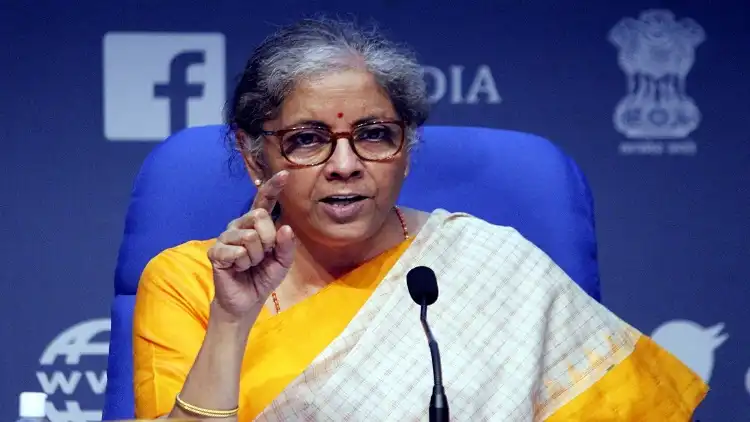
 Sushma Ramachandran
Sushma Ramachandran
The term privatization has been a political hot potato for several decades now. The first government to boldly go ahead with privatization of public sector companies was the Atal Behari Vajpayee-led NDA in 1999. It created a Disinvestment Ministry and actually laid out a roadmap to ensure that the government gradually gets out of the business of doing business. It also went ahead and sold a host of loss-making public sector hotels, as well as profitable concerns like IPCL, Hindustan Zinc and Balco. The net result is that the metal companies are now more productive and profitable than ever before while profitable private hotels are thriving in the old locations.
Controversies did erupt at the time over several issues. One was the concern that the underlying assets of these enterprises were not fairly valued. The company itself may have been loss-making and therefore could be sold for a pittance but the linked assets needed to have been given a higher value. While this aspect has been debated at length, the present government has clearly imbibed the learnings from the first attempt at privatisation. It has thus now outlined an entire policy on the monetization of government assets, which covers more than land but also toll roads along with oil and gas pipelines.
Second phase of privatisation
The monetization plan is part of the initiative to proceed with the privatization of public enterprises that have been spelt out by Finance minister Nirmala Sitharaman in the Budget proposals. In what can be described as the second phase of privatization, plans have been unveiled to remove government from operating in most industrial sectors. Only a few areas have been identified where state-owned companies will be allowed to continue operating. These are atomic energy, space and defence; transport and telecommunications; power, petroleum, coal and other minerals; and banking, insurance and financial services. Even in these sectors, a minimal number of public enterprises will be retained with government equity participation.
What has been viewed with equal interest is the proposal to privatise two state-owned banks and one insurance company during the current fiscal. Though these banks have not yet been identified, it is clear that this is part of the process of consolidating the banking industry that is far too fragmented currently.
Mergers of some banks were already initiated last year with the aim to ensure that the country has a few large banks rather than multiple small ones. It appears policymakers are keen to slowly pull back from ownership of the banking industry but this should be seen as the first step in a long term process.
The Budget proposals for 2021-22 also make it clear that the process of disinvestment for this fiscal will substantially assist in mobilising resources to finance the huge increase in capital expenditure planned for the year. The target has thus been kept at Rs. 1.75 lakh crores, an ambitious goal but still lower than the current year’s target of Rs. 2. 10 lakh crores. The latter is far from being achieved as till now the total revenue mobilization under this head is Rs. 12,400 crores. The year is expected to end with total receipts of Rs. 32,000 crores due to disinvestment. Even in the previous year, 2019-20, the target was set at Rs. 1.01 lakh crore but only half of that was achieved.
It does appear, however, that the targets for the next fiscal will ultimately be achieved unlike in the past. In fact, they may even be exceeded. And the reason is the proposed sale of two giant public sector companies, Air India and Bharat Petroleum Corporation Limited (BPCL). There could not be two more different state-owned companies. Air India is often described as a white elephant as it has huge accumulated losses that make it difficult to sell. BPCL, on the other hand, is a profit-making oil company that has many companies vying to buy it. Both companies are likely to be sold off during the year.
Tatas to buy Air India?
Air India has been made more attractive by removing its debt overhang and providing other incentives. Indications are the Tatas would make a bid for the company which has an emotional resonance as it was launched originally by JRD Tata. In the case of BPCL, several companies have shown interest including mining major, Vedanta and two global equity funds. One reason for BPCL finding ready suitors is that it contains 15.33 per cent of the country’s oil refining capacity and controls 22 per cent share of the fuel marketing network.
There is no doubt that privatization of public enterprises is a significant economic reform that will give a big push to overall growth over the next few years. Of course, with the caveat that it must be executed with efficiency and resolution. Loss-making entities will be saved for more productive purposes.
Besides, there are many that can easily become profitable with private management. For instance, it is quite possible that Air India could return to its glory days as one of the world’s best airlines if it goes to the right kind of management. Then there are profitable companies like BPCL that can become more productive and expand significantly with dynamic corporate owners.
Oil companies need to take quick decisions which are difficult in state-owned companies where the final decisions rest with the administrative ministries.
More PSUs to follow suit
In addition to these two companies, the government has identified about two dozen public enterprises that can be privatized over the course of the year. These include the Shipping Corporation of India, the Container Corporation of India, Cement Corporation and Pawan Hans. There is also a plan pending since last year to have an initial public offer (IPO) for the Life Insurance Corporation.
It is in the backdrop of this new policy approach towards privatization that Prime Minister Narendra Modi’s comments on the importance of wealth creators assume significance. The reality is that the private sector is normally the driver of the economy in most countries. This is so even here but the perception of corporates and entrepreneurs has remained as corrupt and self-serving entities.
It is high time for us all to be reminded that wealth creation is not a crime and wealth creators should be given respect for their risk-taking abilities. Hopefully, his words will improve their image and ensure a change in perspective about their true role in society.
